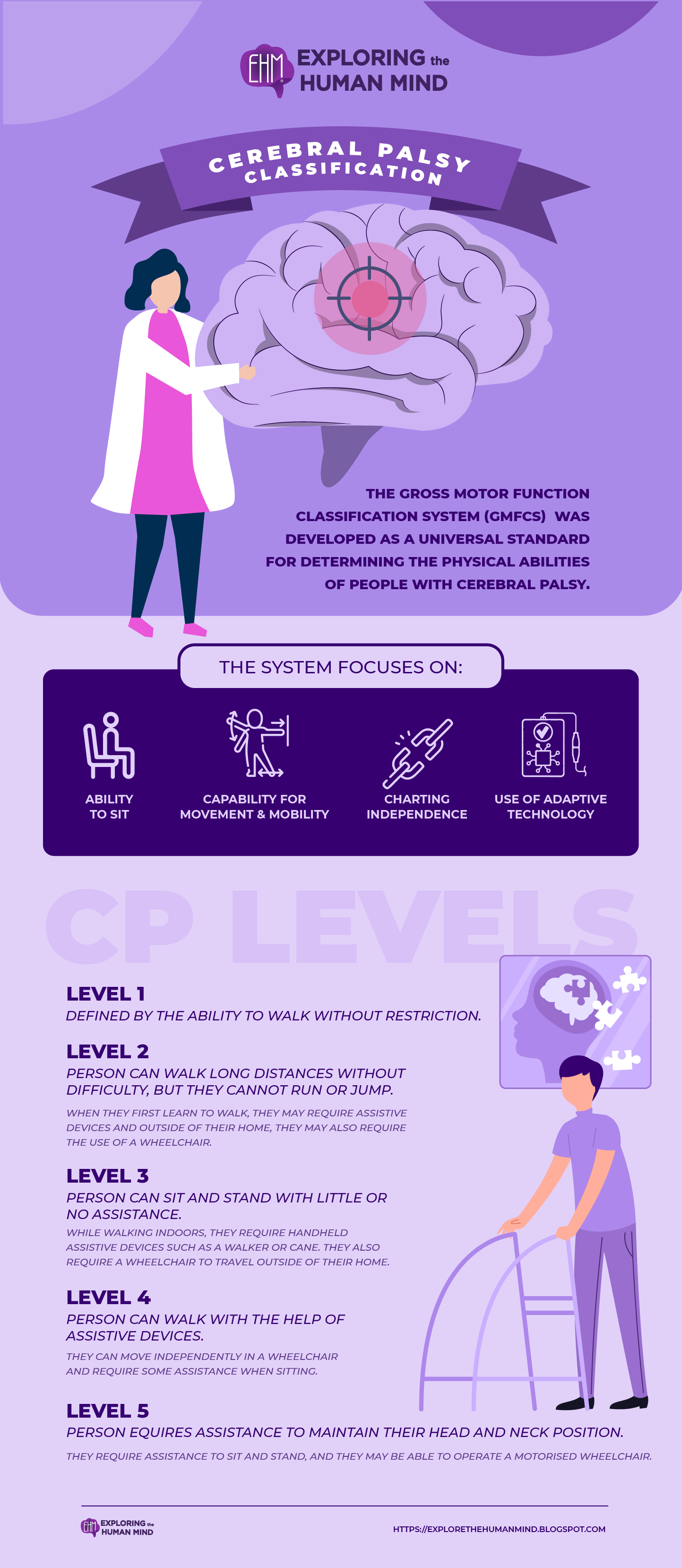Cerebral Palsy Classification
The system focuses on:
- the ability to sit
- the capability for movement and mobility
- charting independence
- the use of adaptive technology
Levels
There are five levels of the GMFCS. Higher levels are associated with decreasing mobility:
Level 1 cerebral palsy
It is defined by the ability to walk without restriction.
Level 2 cerebral palsy
A person with cerebral palsy at level 2 can walk long distances without difficulty, but they cannot run or jump.
When they first learn to walk, they may require assistive devices such as leg and arm braces. Outside of their home, they may also require the use of a wheelchair.
Level 3 cerebral palsy
A person with level 3 cerebral palsy can sit and stand with little or no assistance.
While walking indoors, they require handheld assistive devices such as a walker or cane. They also require a wheelchair to travel outside of their home.
Level 4 cerebral palsy
A person with cerebral palsy at level 4 can walk with the help of assistive devices. They can move independently in a wheelchair and require some assistance when sitting.
Level5 cerebral palsy
A person with cerebral palsy at level 5 requires assistance to maintain their head and neck position.
They require assistance to sit and stand, and they may be able to operate a motorised wheelchair.

vectors by Freepick; graphic design by Vadot
Because the brain disorder that causes cerebral palsy does not change over time, the symptoms usually do not worsen with age. However, some symptoms may become more or less noticeable as the child grows older. If not treated aggressively, muscle shortening and rigidity can worsen.
Cerebral palsy has no cure, but some of its symptoms can often be managed, and many complications can be avoided or delayed. The specific type of treatment varies depending on the individual. Some people with cerebral palsy may not require much assistance, whereas others may require extensive, long-term care to manage their symptoms.
Regardless of the severity of the condition, treatment can help those with cerebral palsy improve their motor skills and ability to communicate.
Reference:
Cerebral palsy - Symptoms and causes. (2021). Mayo Clinic; https://www.mayoclinic.org/diseases-conditions/cerebral-palsy/symptoms-causes/syc-20353999
Cerebral Palsy Guide. (2023, February 2). Cerebral Palsy - Symptoms, Causes, Diagnosis, and Treatment. Cerebral Palsy Guide. https://www.cerebralpalsyguide.com/cerebral-palsy/
Lights, V. (2018, August 17). Cerebral Palsy. Healthline; Healthline Media. https://www.healthline.com/health/cerebral-palsy#classifications






Comments
Post a Comment